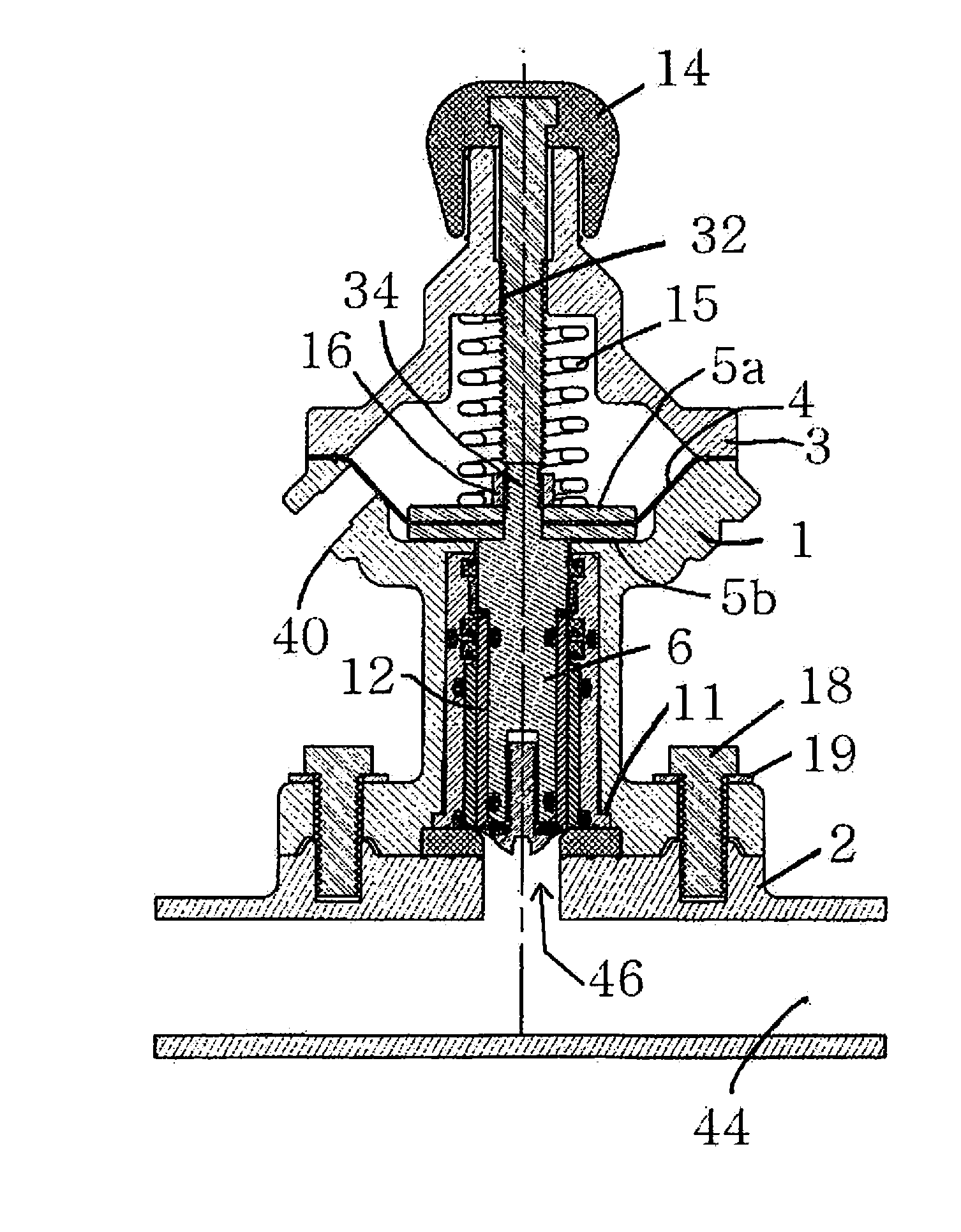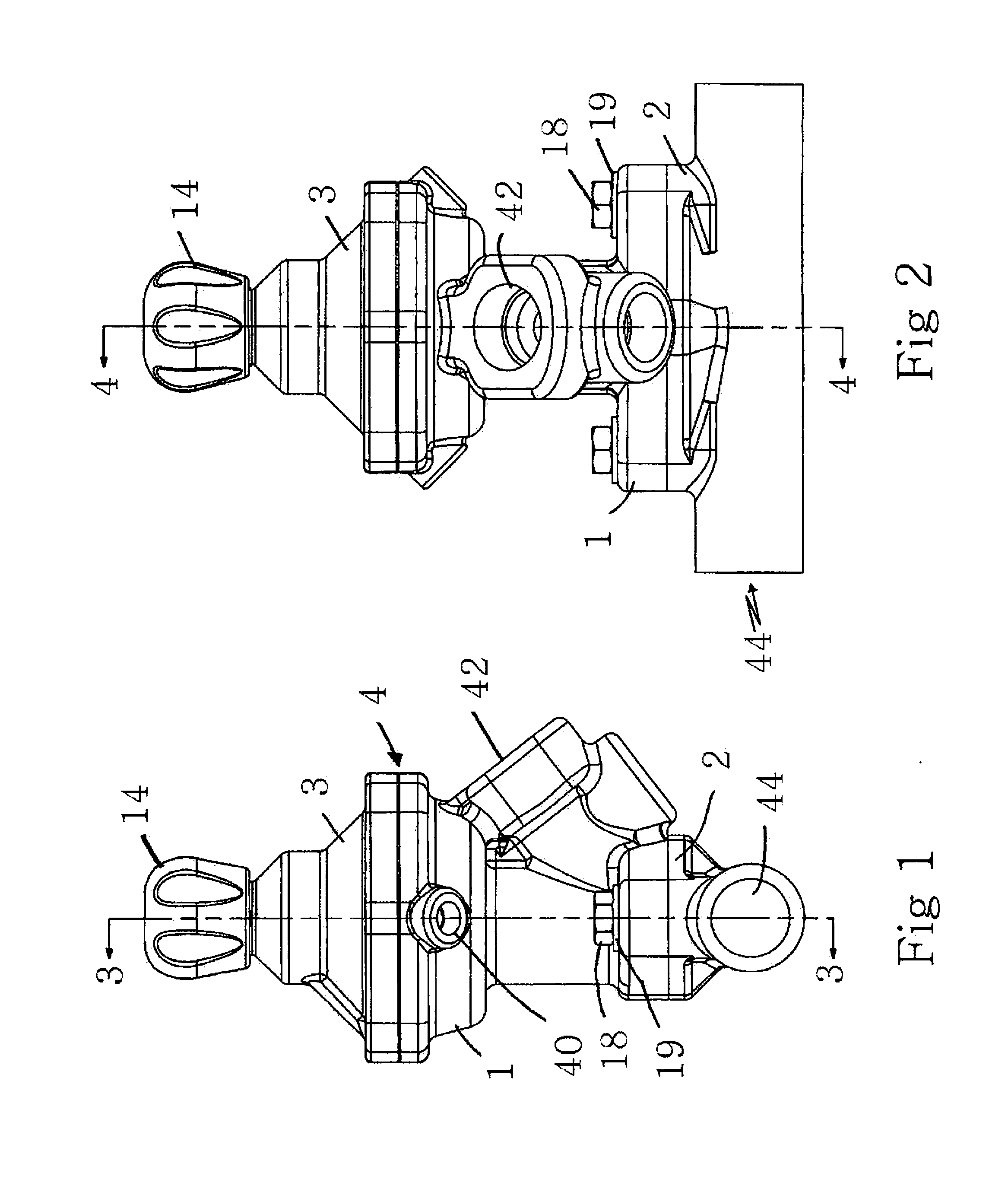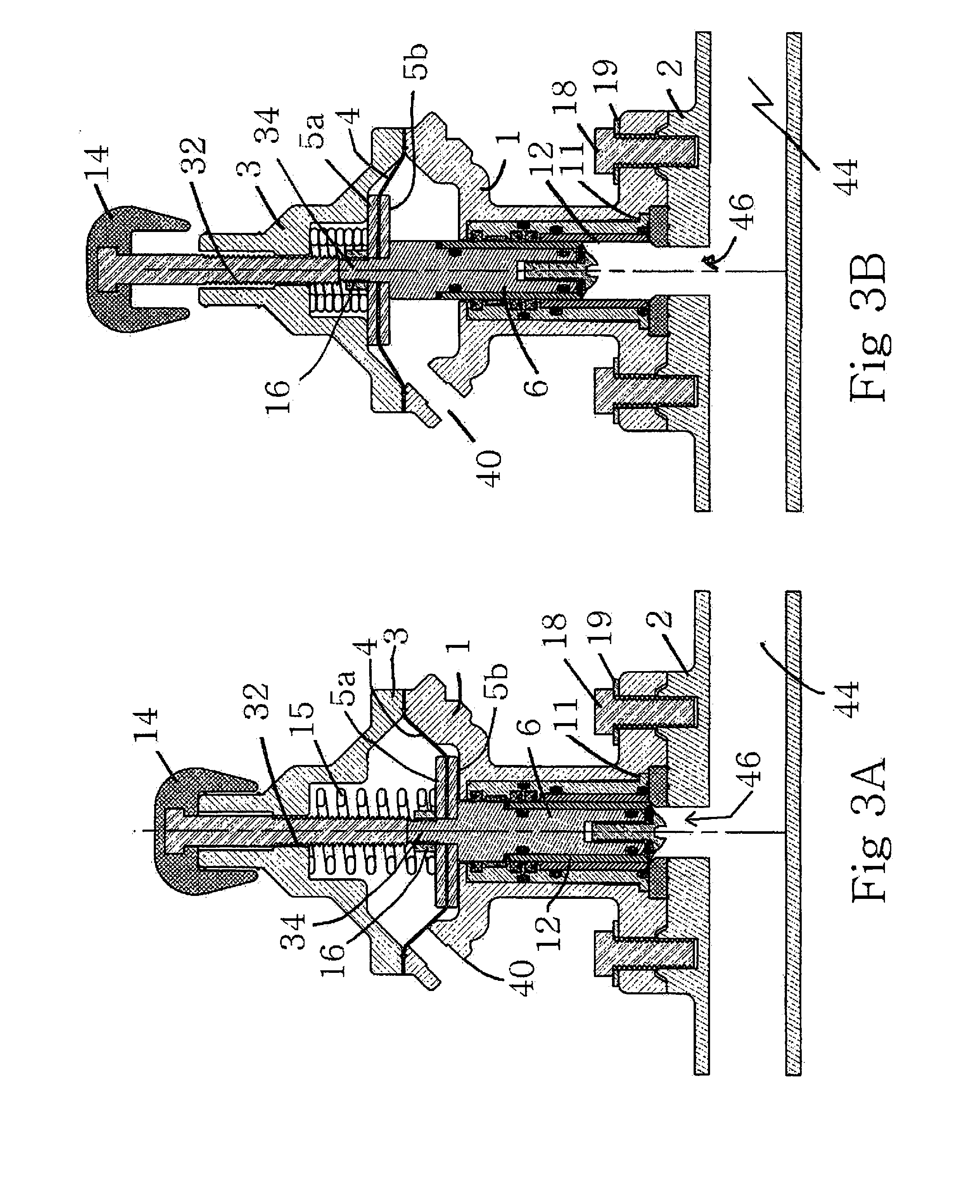Media Control Valve
a technology of control valve and media control, which is applied in the direction of spindle sealing, functional valve type, valve operating means/release devices, etc., can solve the problems of valves that cannot be used, damaged valves beyond use, and need replacement or substantial repair, so as to improve the life and versatility of these valves, reduce sliding friction, and prevent accumulation of residual grit
- Summary
- Abstract
- Description
- Claims
- Application Information
AI Technical Summary
Benefits of technology
Problems solved by technology
Method used
Image
Examples
Embodiment Construction
[0048]FIGS. 1-8 are of a first embodiment of the invention. FIG. 9, which corresponds generally to the view shown in FIGS. 4A and 4B, includes additional modifications for further enhancing the performance of the valve.
[0049]Turning first to FIGS. 1-8, and referring initially to FIGS. 1,2, 3A, 3B, 4A and 4B, the valve assembly includes a valve body 1 for housing the valve plunger assembly, the spool sleeve assembly and the lower diaphragm plate 5b (see, for example FIGS. 3A and 38), as will be explained with reference to FIGS. 5-8. The valve cap assembly 3 is secured to the body 1 and houses the diaphragm 4 (best shown in FIGS. 4A and 48), upper diaphragm plate 5a and the metering knob assembly terminating in the metering knob 14. The upper valve assembly, comprising the body 1, the cap assembly 3, knob assembly including knob 14 and the internal components are typically secured to the valve base 2 by a series of bolts or similar fasteners 18. Typically, a washer 19 is positioned be...
PUM
 Login to View More
Login to View More Abstract
Description
Claims
Application Information
 Login to View More
Login to View More - R&D
- Intellectual Property
- Life Sciences
- Materials
- Tech Scout
- Unparalleled Data Quality
- Higher Quality Content
- 60% Fewer Hallucinations
Browse by: Latest US Patents, China's latest patents, Technical Efficacy Thesaurus, Application Domain, Technology Topic, Popular Technical Reports.
© 2025 PatSnap. All rights reserved.Legal|Privacy policy|Modern Slavery Act Transparency Statement|Sitemap|About US| Contact US: help@patsnap.com



